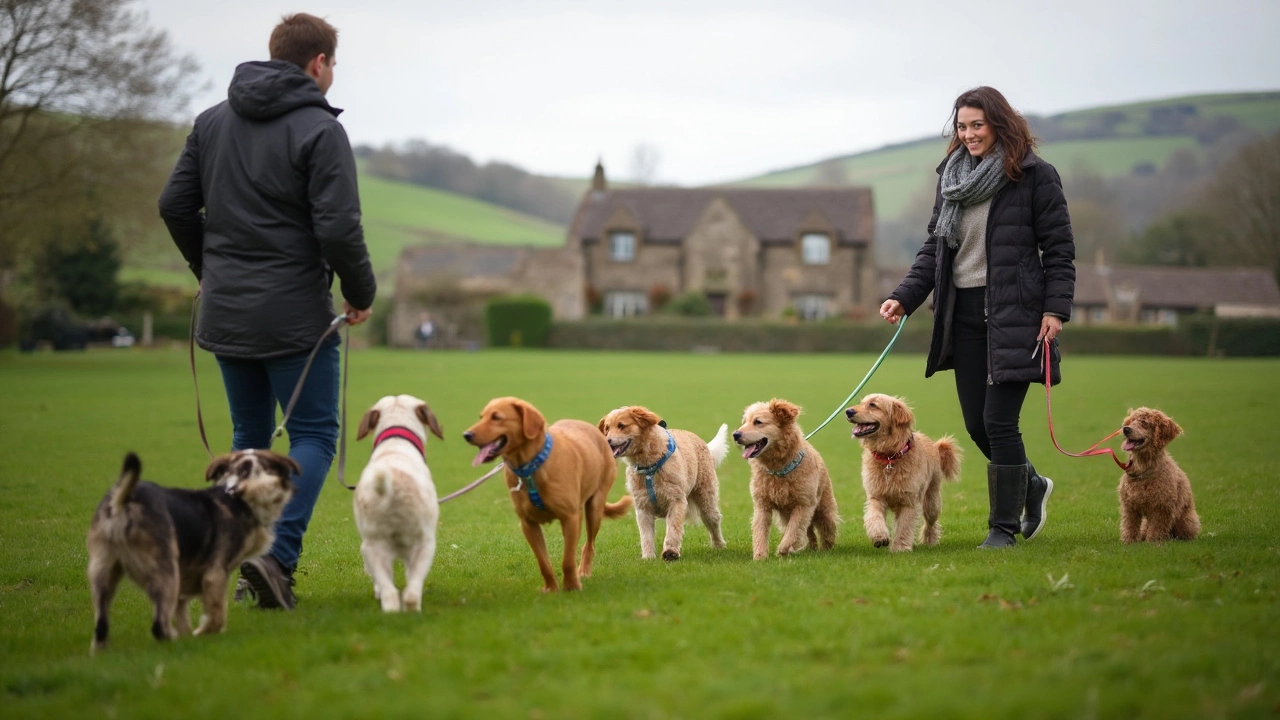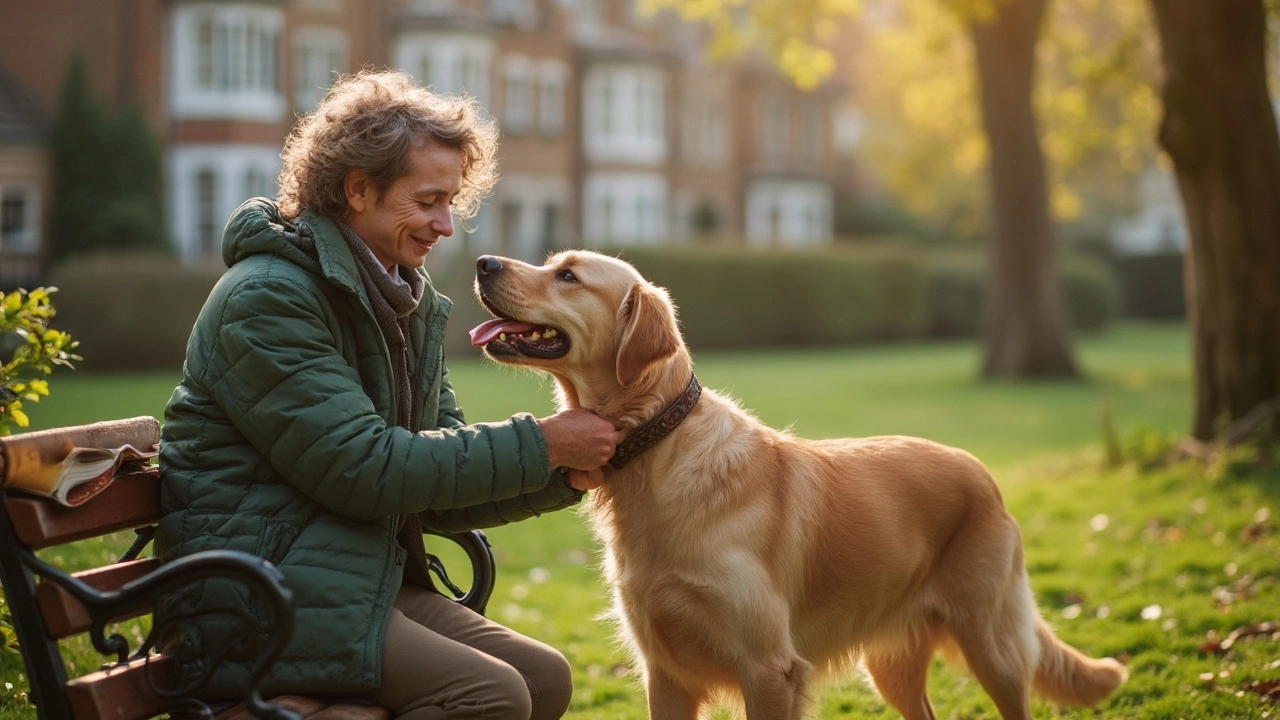Ever stand in the dog aisle, totally confused by all those collars and wondering, “Which one actually helps with training, and which is just for looks?” You’re not alone. Collars aren’t just fashion—they can totally change how training goes for you and your dog, for better or worse.
Most dog trainers swear by a few key styles, but they’re definitely not grabbing the prong collar off the shelf just because it looks tough. The truth is, the right collar does way more than just keep your dog attached to the leash. It can help shape good habits, keep walks calm, and prevent struggle—for both of you.
The best collar depends on your dog’s size, how much they pull, their age, and what kind of lessons you’re working on. You’d be surprised how many pros pick simple things like a well-fitted flat collar or a head halter over harsher tools. It’s not about showing your dog who’s boss—it’s about working together, staying safe, and making training as stress-free as possible.
- Why Collar Choice Matters for Training
- Most Trainer-Approved Collars (and Why)
- Collars to Avoid and Common Mistakes
- Tips for Using Any Collar Safely
Why Collar Choice Matters for Training
Picking the right dog collar is honestly a big deal when you’re getting serious about training. The collar touches your dog’s neck all day, and it’s the spot where you and your pup “talk” through the leash. That’s why dog trainers are super picky about what they recommend. Get it wrong and you might make training way harder, or even put your dog at risk for injury or bad habits.
Research from the American Veterinary Society of Animal Behavior found that gear affects a dog’s comfort, stress levels, and even how fast they learn. If the collar pulls too tight or hurts, your dog will focus on that pain, not what you’re asking them to do. The wrong fit can also cause real health problems, like coughing, throat damage, or even chronic neck pain—none of which help anybody’s training goals.
But it’s not just about safety. The right dog training setup can boost confidence and help your dog “get it” faster. That’s why trainers usually reach for collars that give you control without scaring or hurting the dog.
Some key reasons why collar choice really matters:
- Communication Clarity: The right collar helps you send quick, clear signals so your dog understands what you want.
- Safety: Collars that fit properly and aren’t harsh keep your dog’s neck, windpipe, and skin protected, even on tough days.
- Comfort: A comfy collar means your dog will pay attention to you, not the equipment.
- Preventing Bad Habits: The wrong collar, like a slip chain used wrong, can actually make pulling or lunging worse.
One fun fact: A 2022 poll of certified trainers showed over 80% preferred positive methods and recommended flat collars or harnesses over aversive gear. In short, trainers know collars aren’t one-size-fits-all, but getting this first step right can make or break your training journey.
Most Trainer-Approved Collars (and Why)
Most trainers agree on this: the basic flat dog collar is their go-to for a reason. It’s simple, easy to fit, and works for everyday training with most dogs. Look for a collar that sits snug but can fit two fingers under it—a loose collar slips off, too tight and it’s uncomfortable. Trainers like flat collars for teaching basic manners, recall, and leash walking, especially with puppies or calm adult dogs.
Now, if your dog is a serious puller and going for walks feels like you’re water-skiing behind them, trainers often recommend a front-clip harness or a head halter like the Gentle Leader or Halti. These don’t choke the dog but instead redirect their energy so you get more control without yanking. Studies show that pressure on a dog’s neck from constant pulling can cause throat injuries, so pros usually skip slip leads and choke chains for everyday training.
Martingale collars show up a lot in pro trainer toolkits, especially for dogs with narrow heads (like greyhounds) or those who are expert escape artists. The cool thing about a martingale is it tightens a little if your dog pulls, but without the harsh pinch or choking action. Just make sure it’s fitted right—it should only tighten enough so your dog can’t back out.
Here’s a quick look at what trainers actually use most often:
- Flat Buckle Collar — Basic and reliable for most training, especially with younger pups or well-behaved adult dogs.
- Front-Clip Harness — Great for teaching leash manners to heavy pullers. No more dragged arms.
- Head Halter — Gives gentle control over strong dogs. Takes some getting used to, but works wonders for some.
- Martingale Collar — Perfect for dogs who slip out of regular dog collars or have thin heads and necks.
According to a survey published by the International Association of Canine Professionals in 2023, about 72% of trainers prefer using a harness or head halter for new clients, especially if pulling is a main problem, and only 7% reach for aversive collars right away.
It’s not about having the fanciest gadget. Trainers go for what’s safe, doesn’t hurt the dog, and actually teaches them what you want. Always focus first on good fit and gentle methods—your dog learns best that way.

Collars to Avoid and Common Mistakes
It’s easy to get overwhelmed by choice, but not every dog collar on the market is safe or smart for training. Some collars can actually make behavior problems worse or even hurt your dog.
Dog trainers are super clear about which ones to skip. Here are the big no-gos:
- Prong Collars: These might look like they “control” strong dogs, but they work by pinching the neck. Trainers see lots of anxiety and aggression get way worse from these. If a collar needs metal spikes, it’s not helping you connect better.
- Choke Chains: Old-school but still around, choke chains tighten without limit and can cause trachea or neck damage—especially if your dog pulls hard (or you make a mistake). Vets see a ton of injuries from these, especially in small breeds.
- Shock Collars (E-collars): Zapping your dog for mistakes isn’t teaching, it’s just scaring them. Research out of 2020 found more stress behaviors in dogs trained with e-collars compared to positive methods. Most trainers just won’t use them anymore, outside of rare professional needs.
- Too-small or loose collars: Collars that are too tight can hurt, and loose ones slip off. Always do the “two-finger” test—if you can’t fit two fingers under the collar, it’s too tight; if you slip a full hand under, too loose.
Mistakes with any dog training collar usually boil down to improper fit, using the wrong style for your breed or walk style, or relying on the collar alone to “fix” a behavior problem. A dog collar is just a tool—it’s your choices and patience that make the difference.
Here’s what to watch for in daily life so you avoid common slip-ups:
- Not checking collar fit regularly, especially on puppies (they can outgrow their collar in weeks).
- Leaving training collars on when unsupervised—this is how accidents happen.
- Letting your dog drag you for walks without trying any loose-leash training. Even the best collar can’t do all the work.
One surprising stat: According to a 2022 shelter survey, about 34% of lost dogs were wearing a collar that didn’t fit properly. The right fit can literally be the difference between lost and safe.
So pick the recommended collars for your dog—and skip the ones trainers avoid for a reason. It keeps everyone happier, and your dog safer every day.
Tips for Using Any Collar Safely
Let’s get real—using a dog collar the wrong way can actually do more harm than good, even if you’re using the kind pros recommend. No one wants neck injuries or a stressed-out pup. That’s why trainers always stress safety first, no matter which collar you use.
Here’s what you need to keep in mind when it comes to training with dog collars:
- Fit is everything. Collars should sit snug, but never tight. You should be able to slide two fingers between the collar and your dog’s neck—if you can’t, loosen it.
- Check the collar often. Dogs grow. Leather stretches. Buckles sometimes get loose. Make a habit of checking the fit every week, especially if you have a young dog.
- Don’t leave training collars on unsupervised. Head halters and martingales (which tighten a bit when your dog pulls) should only be on your dog during walks or training sessions. They’re not all-day wear.
- Watch for signs of discomfort. If your pup’s scratching, pawing at their neck, or trying to back out of the collar, something’s off. Red marks or fur loss? Time for a change.
- Go slow with new collars. Let your dog sniff and wear a new collar around the house before heading outside. This helps them get used to it and makes the first walk way less dramatic.
- Pair any collar with positive reinforcement. Don’t rely on the collar alone for training. Bring out the treats, praise, or toys so your dog connects the collar with good things.
Here’s something that sticks with you—Susan Garrett, a world-class dog trainer, once said:
“A collar is just a tool. It’s not a shortcut for communication or patience. The real training happens because of your timing, rewards, and clear signals.”
And if you’re wondering about actual numbers, The American Veterinary Medical Association found that flat dog collar injuries are rare if the collar fits well and is checked regularly, while poorly fitted or misused collars account for the majority of neck injuries in vet clinics. That’s proof fit truly matters.
| Collar Type | When to Remove | Check Fit How Often? |
|---|---|---|
| Flat Collar | For playdates, keep on. Remove only if it gets wet or damaged. | Every 1-2 weeks |
| Martingale | Always off when unsupervised | Weekly |
| Head Halter | Only for walks/training | Before every use |
Bottom line? Whether your dog trainer recommends a simple collar or a training tool, using it safely always comes first. A little extra care makes all the difference for your dog’s happiness and health.
